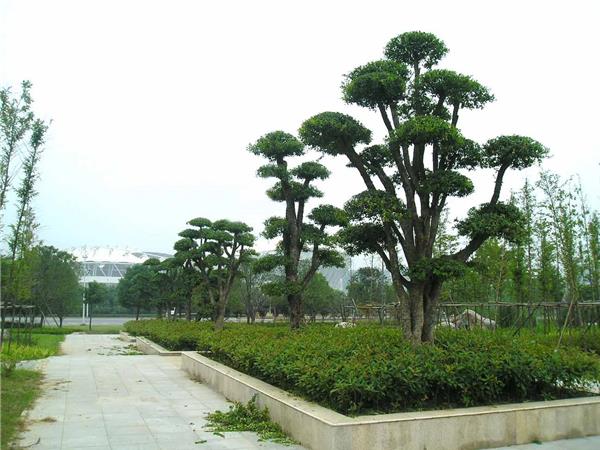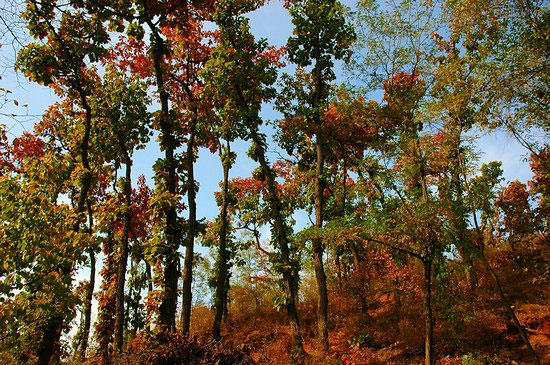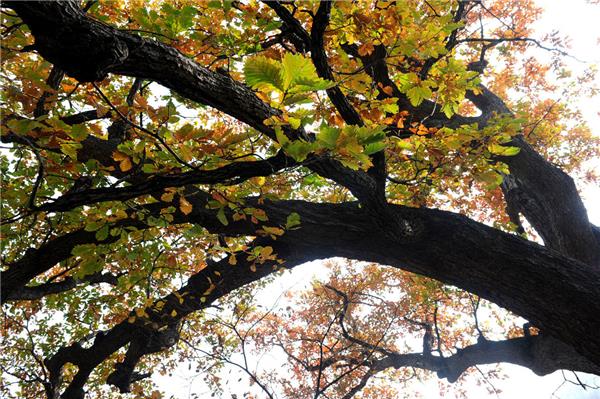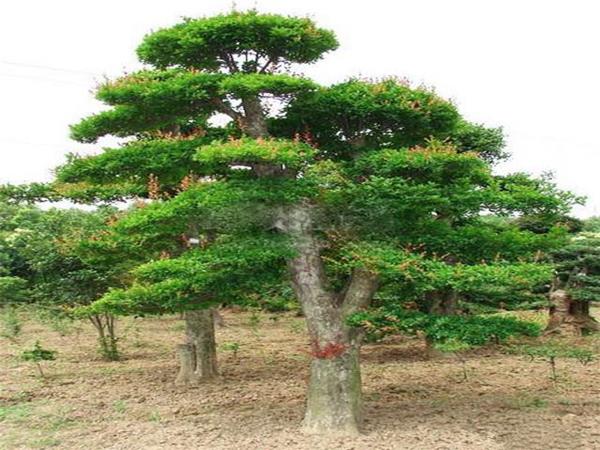Planting management and function of oak tree
Oak tree is a kind of landscape tree species which is often used in landscape design. it has unique characteristics as if the general tree shape has been shaped by an artist, so that it can play a good ornamental effect no matter it is isolated or group planting.

Planting and management techniques of oak trees
Seed collection: when the fruit falls off naturally or shakes the tree can fall and pick up seeds from the ground. The 1000-grain weight is 3000-4500 g, and the germination rate of seedling seeds is high.
Sowing: can be sowed in autumn, winter and spring. Sowing in autumn and winter is carried out from November to December, and the seeds are generally sown with picking after maturity. Autumn and winter sowing can be used in areas where frost is not serious, and it accords with the characteristics of oaks. It also reduced storage, sprouted and unearthed early in the next spring, and the survival rate was higher than that of spring sowing. Spring sowing should be early to avoid seed germination and mildew of stored seedlings. Seedling seeds are often damaged by weevil, which can be treated by soaking seeds in 55 °warm water for 10 minutes before sowing. Oak tree is a mycorrhizal tree species, which needs to be mixed with fungus soil. Strip sowing was used with row spacing of 20 cm and seed spacing of 10 m. The sowing rate is 150-200 kg per 667 square meters. When sowing, the seedling seeds should be placed horizontally, which is beneficial to seedling emergence and rooting. After sowing, the soil can be covered with 3 meters of soil, which can also be covered with fungus soil to facilitate mycorrhizal development. The thickness of the covered soil should be the same, otherwise the seedlings will not emerge neatly.
Management: emergence of seedlings about 1 month after sowing. When the seedlings were unearthed, the young roots were already deep in the soil. In order to promote the formation of lateral roots, one month after emergence, the main root of the seedling was cut off with a shovel and watered in time after root cutting. The seedlings that cut off the main roots tend to grow slowly for a while. In the fast-growing period, both height growth and thick growth are faster, so fertilizer and water management should be strengthened. The oak tree is the whole growth type, and the coarse growth does not end until the beginning of November. The height of one-year-old seedlings can reach 40-60 cm.

The function and effect of oak tree
1. Oak leaf
① treatment of acute bacillary dysentery: tussah leaves into 50% decoction, 100ml each time, 3 times a day, 7-10 days as a course of treatment. Can take two consecutive courses of treatment. You can also use 100 ml of 25% decoction for retention enema, once a night before going to bed. According to the observation and statistics of 181cases, the fever decreased in an average of 2.1days, the abdominal pain and acute weight disappeared in 3.4days and 3.5days, and the stool frequency and characteristics returned to normal in 4.1days and 4.4days, respectively. Among the 36 patients with positive ☆, 20 cases turned negative within 3 days, and the others became negative on the 6th day. 23 cases were followed up one month later, and 3 cases recurred. No toxic reactions and side effects were found in the course of treatment.
② treatment of indigestion in children: fresh and tender oak leaves were picked from June to August, dried in the shade and ground into a very fine powder, then scorched by gentle fire for oral use. 0.5 grams each time within 1 year old, 0.75 grams every time over 1 year old, 3 times a day. 100 cases of toxic dyspepsia in children were treated. 97 cases were cured and 3 cases were ineffective (all complicated with malnutrition). The shortest course of treatment is 1 day, and the longest is 10 days; among them, 38% of the patients are cured within 3 days, 39% of them are cured within 4 days. There was no adverse reaction after taking it.

two。 Oak bark
① treatment of infantile diarrhea: take 3 taels of tussah bark washed and chopped, add 4000 ml of water, fried into 1000 ml, soak your feet with this decoction for half an hour each time. For seriously ill patients, oral decoction 20 ml, 2 or 3 times a day. 200 cases were treated, and 96.5% of them were cured and improved.
② treatment of amoebic dysentery: take 200 grams of fresh oak bark and boil it with water for 15 minutes to make 1000 ml decoction. Take it 3 times a day, 5 to 10 milliliters before meals. You can also use decoction enema. After clinical verification, all have a certain curative effect, without any side effects.
③ treatment of dysentery, enteritis, diarrhea: tussah bark five money. Fried in water, take it three times a day.
④ treatment of jaundice: oak bark, charcoal grinding. Two dollars at a time, three times a day.
⑤ treatment of hemorrhoids: fresh tussah bark mashed, apply to the affected area.

Well, that's all for the introduction of the oak tree. After reading the above introduction, do you also have a more in-depth understanding of the oak tree? If you also want to raise a tree in the courtyard, then the oak tree will be a very good choice.
Related
- Wuhan Hospital Iron Tree Blooming Result Was Instantly Frightened by the Gardener Master
- Which variety of camellia is the most fragrant and best? Which one do you like best?
- What is the small blue coat, the breeding methods and matters needing attention of the succulent plant
- Dormancy time and maintenance management of succulent plants during dormancy
- Minas succulent how to raise, Minas succulent plant pictures
- What are the varieties of winter succulent plants
- How to raise succulent plants in twelve rolls? let's take a look at some experience of breeding twelve rolls.
- Attention should be paid to water control for succulent plants during dormant period (winter and summer)
- Watering experience of twelve rolls of succulent plants
- Techniques for fertilizing succulent plants. An article will let you know how to fertilize succulent plants.



